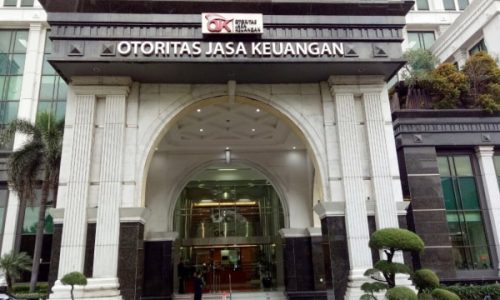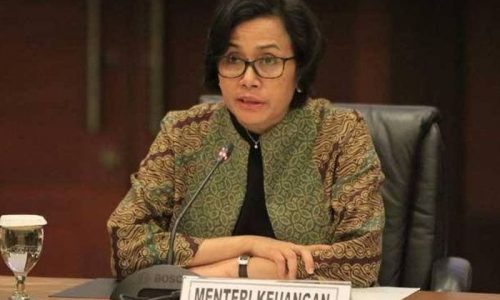On February 18, 2021, the Fisheries and Maritime Affairs Ministry (KKP) issued a new regulation which initially intended to address and solve the issue about disorganized submarine communications cable and pipes. It will be the legal basis for any installment of underwater pipes and cables. A better controlled layout of these cables and pipelines are crucial in optimizing the use of submarine spaces and to the use of shipping anchors, tourism, telecommunication, mining and especially the sustainability of the ocean’s ecosystem. This article will further break down the arrangement of submarine cable and pipe.
Governing law and regulation
- Law No. 32/2014 concerning Marine
- Law No. 36/1999 concerning Telecommunication
- Government Regulation (PP) No. 52/2000 concerning Telecommunications Operation
- Government Regulation (PP) No. 46/2021 concerning Post, Telecommunication, and Broadcasting
- Regulation of the Minister of Communications and Information Technology (Permenkominfo) No. 5/2021 concerning Telecommunications Operation
In telecommunications business activities, submarine cables have been recognized as an effective means of communication link. This cable is used for communication purposes because it can transmit signals instantly using fiber optic technology that can carry digital data, which includes telephone, Internet, and personal data traffic. These cables are laid on the seabed between land stations to carry telecommunications signals across oceans and seas. This submarine cable is regulated in article 1 number 10 of the Permenkominfo No. 5/2021 which is known as the Marine Cable Communication System (SKKL), which is a telecommunications transmission system using cable media that is stretched in the ocean or ocean to connect several cable stations in each country. which he went through. In using this submarine cable, the Telecommunication Network Operator has the right to provide international telecommunications transmission facilities directly to the territory of Indonesia through cooperation with foreign business entities. This right was later known as the anchoring right of the International Telecommunication Transmission Sea Cable Communication System, hereinafter referred to as the SKKL anchoring right.
Cooperation in implementation of international telecommunications transmission cable marine communication systems
Telecommunication Network Operators that may have SKKL Anchoring Rights include international fixed network operators and closed fixed network operators. The Telecommunication Network Operator is required to build a cable landing station (CLS) and/or rent it from a Telecommunication Operator that owns a cable landing station. In cooperating with foreign business entities, Telecommunication Network Operators are required to comply with several provisions. The Telecommunication Network Operators must declare the ability to be responsible for fulfilling all obligations imposed on the SKKL for international telecommunication transmission in accordance with the provisions of laws and regulations. Telecommunication Network Operators are SKKL providers that have been actively operating for a minimum of 5 (five) years and have achieved 100% (one hundred percent) of the development commitments for the first 5 (five) years. The Telecommunication Network Operator is a member of the consortium for the construction of the said international Telecommunication SKKL transmission and invests in submarine cables at least 5% (five percent) of the total investment of the consortium in providing all international SKKL in the territory of Indonesia.
Then, Telecommunication Network Operators have full rights and authority as controllers in making decisions on the submarine cable system in the territory of Indonesia as stated in the consortium cooperation agreement. Telecommunication Network Operators do not have non-tax state revenue obligations owed to the Ministry of Communication and Information. In addition, Telecommunication Network Operators must have confirmation of tax payer status from the ministry that carries out government affairs in the financial sector. Telecommunication Network Operators must also have control over and operate the international SKKL network landing in Indonesia. Telecommunication Network Operators also need to report the international SKKL as part of the development commitment before the installation of the SKKL begins. Telecommunication Network Operators must build cable stations and/or rent from Telecommunications Operators that have cable stations at the location, follow the submarine cable channel corridor, and follow the rules for deploying SKKL, in accordance with the provisions of laws and regulations. Telecommunication Network Operators also have the right to supervise and fully manage the traffic sent and received at cable stations. Telecommunication Network Operators also need to provide facilities for the government to conduct lawful interceptions. Lastly, Telecommunication Network Operators must pay attention to the availability of Telecommunication Network redundancy for international routes.
Such cooperation must also comply with the elements of information security and confidentiality, personal data protection, fair business competition, the interests of the state and society, state defense and security, and the efficiency of international telecommunications transmission facilities nationally. Later, the fulfillment of these elements must be proven by the Telecommunication Network Operator through an undertaking letter.
Report obligation
Telecommunication Network Operators providing international telecommunications transmission facilities are required to submit an annual report to the Minister of Communication and Informatics regarding the operation of SKKL for international Telecommunication transmissions which at least includes traffic, subscribers, network utilities, and tariffs to subscribers.
Termination of cooperation
In the event that the cooperation will end with the existing cooperation partner and is not extended again, the foreign business entity is obliged to look for another cooperation partner in the form of a Telecommunication Network Operator in accordance with the above provisions. At the end of the cooperation, foreign business entities are prohibited from carrying out SKKL business activities for international connection transmissions. If within 6 (six) months after the end of the cooperation, the foreign business entity does not cooperate with other Telecommunication Network Operators, then the foreign business entity is obliged to submit SKKL assets in Indonesia to the Telecommunication Network Operator as referred to in Article 13 paragraph (1).
Authority in the communication sector is held by the Ministry of Communication and Information. This authority is stated in the Permenkominfo No. 16 /Per/M.Kominfo/9/2005 concerning Provision of International Telecommunication Transmission Facilities Through Marine Cable Communication Systems.
Submarine cable map in Indonesia
According to the Marine Affairs and Fisheries Ministerial Regulation (Permen KKP) No. 14/2021 on Submarine Pipelines and Cables Policy, the government has agreed on a reference map for submarine cable corridors in Indonesian waters. There will be 217 corridor lines, 209 beach main holes, and four landing station locations for in and out cables in Indonesian waters as per the regulation. The government wants to lay down its rights to guarantee national security and defense, and also guarantees that their rights are included in state revenues, while protecting business actors in Indonesia, in particular to create fair business competition, as well as encouraging domestic and international operators to work together. fulfill their obligations fairly and equitably.
According to Permen KKP No. 14/2021, there are 217 channels for submarine cables, 43 pipelines, 209 beach main holes, as well as landing station locations, namely Batam, Kupang, Manado and Jayapura. Meanwhile, of the 327 cables that have been laid out, 145 of them are out of line, with details of the remaining 134 active cables being inactive.
Procedure
Regarding the deployment of underwater telecommunication cables, there are five stages that must be passed by the applicant (operator). The five stages start from pre-registration, registration, assessment, issuance of permits, and the implementation of the deployment of submarine cables. In applying for the deployment of subsea pipelines, the applicant must fulfill the approval of the suitability of marine space utilization activities, permits to build installations in waters, environmental permits, to security clearance and security officers.
An application for SKKL anchoring rights for international Telecommunication transmission by a Telecommunication Network Operator is submitted to the Minister of Communication and Information with the requirements of a copy of the Business License for Operating a closed Fixed Network SKKL, a copy of the cooperation agreement for the provision of international Telecommunication transmission facilities through SKKL with a foreign business entity, and an undertaking letter as stated above.
To obtain a Business License, there are several steps that must be taken and the requirements that must be met by the Telecommunication Network Operator. The summary is as follows:
- Registration
At this stage the telecommunications network operator must complete the prerequisites and licensing requirements consisting of KKPRL (Suitability of Marine Space Utilization Activities), Environmental Approval and Business Licensing. In addition, there are non-licensing requirements that must be met, namely security clearance and technical officers.
- KKPRL Permit
In the telecommunications transmission system using cable media that is stretched in the ocean, of course, it certainly requires a spatial plan, hereinafter abbreviated as RTR. In order for this RTR to be in accordance with the Spatial Structure and Spatial Pattern, an effort is needed in the form of Spatial Utilization through the preparation and implementation of programs along with financing. This conformity between the spatial use activity plan and the RTR is then referred to as the suitability of spatial use activities or abbreviated as KKPR. This KKPR is the basic requirement of a Business Licensing. The implementation of KKPR for business activities in Coastal Waters, territorial waters, and jurisdictional areas, is carried out through the Approval of the Suitability of Marine Space Utilization Activities (PKKPRL). PKKPRL is implemented through OSS. In the registration stage, the PKKPRL application must at least be equipped with location coordinates, plans for buildings and installations at sea, the need for the area of Spatial Utilization activities at sea, information on the utilization of the surrounding space, and the depth of the location. PKKPRL is given after a study has been carried out using a tiered and complementary principle based on the provincial spatial plan, KSN RTR, KSNT RZ, KAW RTR, island/archipelagic RTR, and/or the National Spatial Plan. PKKPRL can be granted in the territory of the customary law community after obtaining the approval of the customary law community.
- Environmental Approval
Furthermore, business actors need to have an Environmental Approval (AMDAL-UKL/UPL) issued by the Ministry of Environment and Forestry, the full details can be seen in this article.
- Business License
To understand how to get a business license, read this article.
- Security Clearance
Security Clearance, hereinafter abbreviated as SC, is an approval document, not a permit, issued by the Minister of Defense, after considering aspects of state sovereignty, defense, and administration, containing the type of activity location, personnel, vehicle, equipment and period specified. This SC is a manifestation of the policy of the Minister of Defense in the field of surveying and mapping security, for the sake of national defense, by synergizing military and non-military defense, as the basis for a Survey and Mapping activity carried out by the applicant. This SC is submitted through a written application to the Director of the Defense Region – Directorate General of Defense Strategy, Ministry of Defense (Dirwilhan Directorate General Strahan – Kemhan).
- Technical Officer
Technologists carry out specialized design and support functions in telecommunications engineering including optimisation and performance monitoring of telecommunications networks, diagnosis and repair of faults, and the selection and installation of equipment.
- Evaluation
In the PKKPRL assessment process, the Minister of KP will consider the type of activity and the scale of business, the carrying capacity and capacity/availability of Sea space, the need for space to support the interests of the activity, the utilization of the existing Marine Space, the technology used, and the potential environmental impacts caused.
This PKKPRL will at least contain the location of activities, types of activities for Utilization of Marine Space, as well as rights and obligations for the implementation of Marine Spatial Utilization activities. The period for the issuance of PKKPRL is a maximum of 20 (twenty) days calculated from the registration or payment of non-tax state revenue. In the ministry that carries out government affairs the Maritime Affairs does not also issue PKKPRL, then PKKPRL is issued by the OSS Institution.
- Issuance of Requirements and Business Licensing Documents
To obtain this permit, business actors must first create a Business Permit Number (NIB) through oss.go.id. To understand more about the OSS system you can read this article.
Then there are several licenses for the operation of telecommunications networks which consist of:
- the operation of a circuit switched local fixed network;
- the operation of a packet switched-based local fixed network;
- the operation of a fixed network of long-distance direct lines;
- the operation of a fixed network of international connections;
- maintenance of a closed fixed network;
- cellular mobile network operation;
- the operation of satellite mobile network; and/or
- the operation of the Terrestrial Radio Trunking mobile network.
Furthermore, business actors must obtain a Water Location Permit/Zoning/Corridor (basic approval) issued by the Ministry of Maritime Affairs and Fisheries. Business actors also need to have an Environmental Permit (AMDAL-UKL/UPL) issued by the Ministry of Environment and Forestry. Furthermore, business actors need to obtain a Permit to Build, Move, and Dismantle Buildings and Installations issued by the Director General of Sea Transportation, Ministry of Transportation. Only then will the business actor obtain an Operational Approval (underwater pipe) issued by the Ministry of Energy and Mineral Resources.








